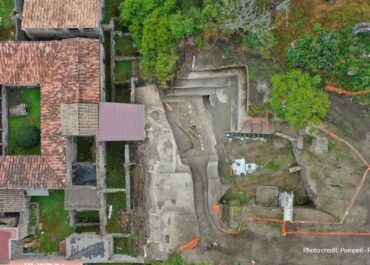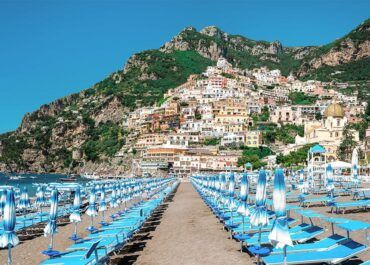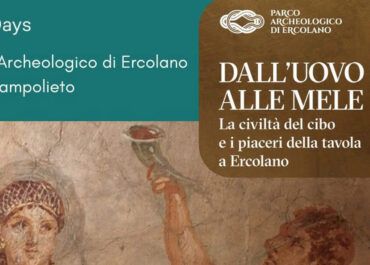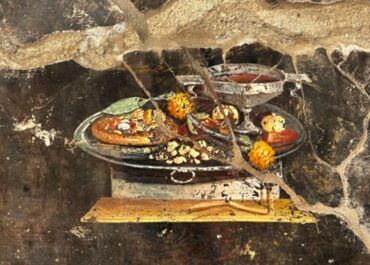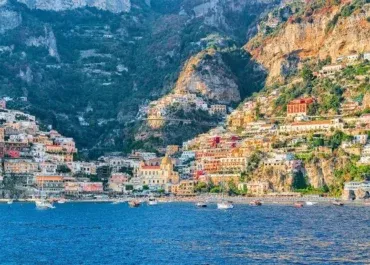Ancient Bench Found Outside the Villa of the Mysteries
In a stunning new archaeological discovery, researchers have unearthed an ancient waiting bench just outside the entrance to the Villa of the Mysteries in Pompeii. This seemingly humble structure adds a powerful new layer to our understanding of everyday life in ancient Rome, revealing a place where clients, workers, and travelers once waited—perhaps impatiently—for an audience with the villa’s elite residents.
Ready to explore the Villa of the Mysteries?
Make your visit easy and immersive by booking a private transfer to Pompeii or joining a guided tour of Pompeii with See Amalfi Coast Private Tours. Discover hidden stories, world-famous frescoes, and expert local insight with comfort and convenience.
More Than Art Lovers: Who Was Really Waiting at the Villa?
While today’s visitors might queue outside Pompeii’s most famous homes to admire their frescoes, two thousand years ago, people waited here for very different reasons. Recent excavations revealed a bench made of cocciopesto (a durable Roman mortar), situated along the public road outside the Villa’s monumental entrance.
According to site director Gabriel Zuchtriegel, these were not art enthusiasts waiting for a tour—but rather clients, laborers, and petitioners hoping to gain favor or assistance from the villa’s wealthy owner. In Roman society, this kind of morning visit—called a salutatio—was a key ritual, especially for those who relied on elite patrons for legal support, employment, or financial help.
Graffiti on the Wall: The Bored Voices of the Past
Waiting was often long and uncertain. Some hopeful visitors may have never even been granted entry. During these idle hours, someone took a piece of charcoal or a sharp tool and scratched graffiti into the walls beside the bench—markings that include a partial date and a name. These are the faint, human echoes of Pompeii’s forgotten classes, who sat beneath the grandeur but rarely stepped inside it.
Archaeology Behind the Scenes
This discovery was made possible thanks to a joint operation between the Pompeii Archaeological Park and the Public Prosecutor’s Office of Torre Annunziata. The excavation resumed after the demolition of an illegally built structure over the site, including a restaurant and a house that once obstructed the area.
According to Prosecutor Nunzio Fragliasso, the operation reflects an important collaboration between cultural protection and legal enforcement. The cleared space now allows visitors to fully enjoy and study one of Pompeii’s most iconic landmarks.
New Insights from the Excavation
In addition to the bench, archaeologists uncovered the original monumental entrance to the villa, partially preserved with lava stone paving and protective stone barriers. A vaulted rectangular cistern was also found, connected to an ancient water management system.
Inside the villa, newly exposed rooms show refined Third Style wall paintings in deep black and yellow tones with intricate decorative motifs. Excavations also revealed parts of the servant quarters, still partially buried, offering a glimpse into the lives of those who lived and worked behind the scenes.
The Eruption Layer: History Sealed in Ash
The dig preserved an exemplary stratigraphic sequence of the 79 AD eruption of Mount Vesuvius, including ash fall and pyroclastic flow layers. Beneath the pumice deposits, a section of Roman agricultural soil—arranged in the characteristic “a conchette” pattern—was also discovered, showing how land management was organized before the disaster.
Looking Ahead: What’s Next for the Villa of the Mysteries
The ongoing excavation will focus on the still-buried servant areas of the villa, expanding knowledge of its social dynamics and layout. As more rooms and features come to light, Pompeii continues to surprise scholars and visitors alike—reminding us that even a simple bench can tell extraordinary stories of class, power, and human waiting.
Book your tour of Pompeii today and see for yourself how archaeology brings history to life—bench by bench, fresco by fresco.

